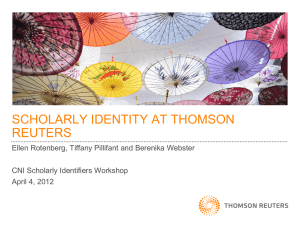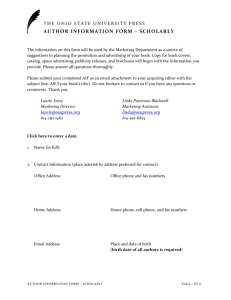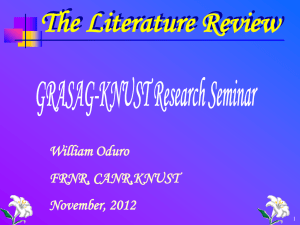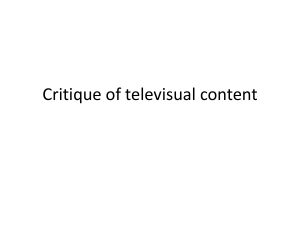Scholarly Article Review
advertisement
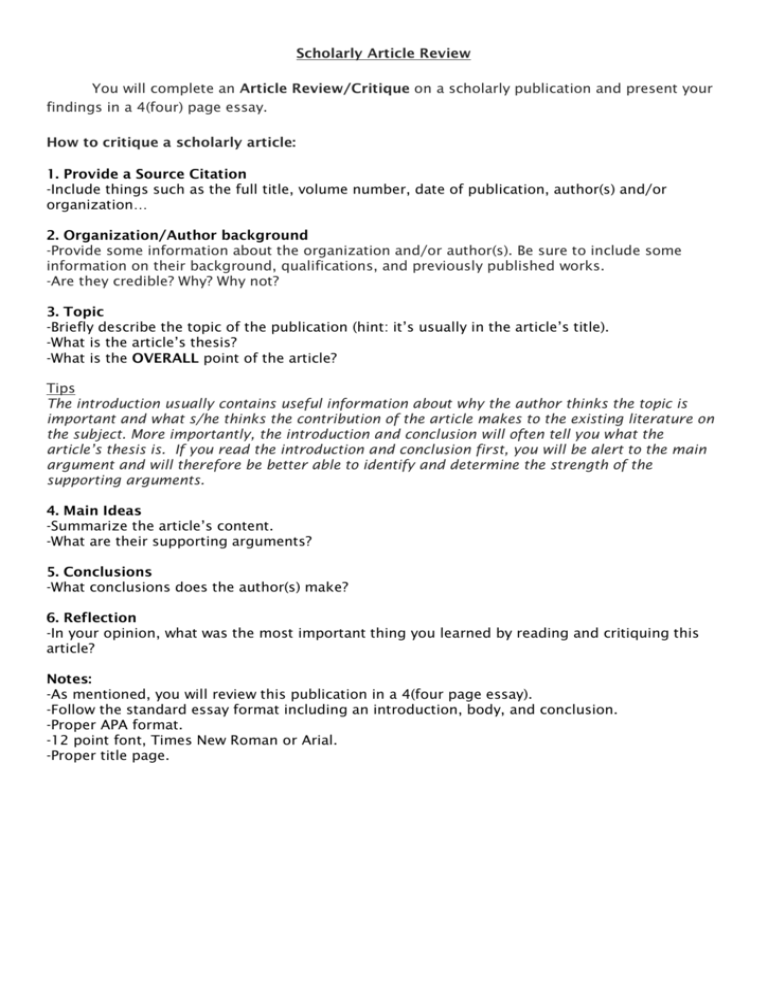
Scholarly Article Review You will complete an Article Review/Critique on a scholarly publication and present your findings in a 4(four) page essay. How to critique a scholarly article: 1. Provide a Source Citation -Include things such as the full title, volume number, date of publication, author(s) and/or organization… 2. Organization/Author background -Provide some information about the organization and/or author(s). Be sure to include some information on their background, qualifications, and previously published works. -Are they credible? Why? Why not? 3. Topic -Briefly describe the topic of the publication (hint: it’s usually in the article’s title). -What is the article’s thesis? -What is the OVERALL point of the article? Tips The introduction usually contains useful information about why the author thinks the topic is important and what s/he thinks the contribution of the article makes to the existing literature on the subject. More importantly, the introduction and conclusion will often tell you what the article’s thesis is. If you read the introduction and conclusion first, you will be alert to the main argument and will therefore be better able to identify and determine the strength of the supporting arguments. 4. Main Ideas -Summarize the article’s content. -What are their supporting arguments? 5. Conclusions -What conclusions does the author(s) make? 6. Reflection -In your opinion, what was the most important thing you learned by reading and critiquing this article? Notes: -As mentioned, you will review this publication in a 4(four page essay). -Follow the standard essay format including an introduction, body, and conclusion. -Proper APA format. -12 point font, Times New Roman or Arial. -Proper title page. How to write it… What is an article review or critique? An article review or critique is a specialized form of writing in which the reviewer engages with a scholarly source — usually a journal article or academic book —and summarizes and evaluates its main ideas, claims, positions, or findings. How are academic or scholarly critiques different from other reviews I have read? You may already have written a book review or heard a critic reviewing a movie but an academic or scholarly review is very different. Most book and movie reviews assume a general reader or moviegoer. They advise the general audience to either buy a certain book or see a particular movie. They offer an opinion which may or may not be based on expert knowledge and which may or may not be supported with examples and proofs. These reviews are not generally written to advance understanding in an area of research, but to offer a persuasive opinion. The scholarly critique or review, on the other hand, usually offers an actively engaged response to a scholarly writer’s ideas which represents more than simply an opinion. Writing an article review is a way for students to display their knowledge of a scholarly topic; to engage with ideas, theories, research and information in their disciplines or programs; to rethink and extend ideas in their field of study; and to show how their analytical response to an article is worthy of consideration. What are the roles of critiques in an academic context? Academic readers don’t just want to know if you enjoyed an academic article or disliked it. Rather, academic readers, much like you, highly value reviews of articles and books because they do the important work of pointing out the useful contributions that an article or book makes to an area of research. When you write a critique or review, when you critique the scholarly work of others, you signal your active participation in these important conversations. You can’t just say that you liked the article or not. GETTING STARTED: 1. Read the article carefully to discover its main topic. What is the big term or concept being discussed? 2. Re-read the article (maybe several times) and determine, and write down! the argument(s) it makes. Articles in academic disciplines represent an ongoing conversation about topics that matter in the field. Articles represent a kind of “knowledge building.” People publish articles as a way of showing their research to others in their field. Others in the field read these articles and either are glad to accept these findings as ways to see important information, or to dispute or disprove others’ research, on the basis of their own statement that makes and supports a claim about the nature of something in the world. “The presence of pets in a care facility tends to increase lifespan and quality of life” is an example of a claim. Support for the argument might be in the form of statistics or anecdotes. In your review, tell your reader how the article supports its claims, explain the support it offers, and examine how thorough or effective this support is. 3. Ask yourself about what else you know about the topic, have heard about it, read about it, and in particular what you may have discussed about it in class. Have you heard the same point made this way, or a different view of this point? Does the article you are reviewing mention other articles, other work in the field? Does it agree or disagree with such work? Does your article build on this other knowledge in the field or does it make distinctions between its findings and those you have seen in other articles? This is how you can begin to take a critical approach to the article you are reviewing. You can say how similar or different it is from other views you have seen on the topic. You can say how well it makes its main point, how much of a contribution to knowledge on this topic it makes. Does it present enough support, enough evidence for the claim it makes? Is its evidence recent or not very recent? Tell your reader what the article’s claim looks like to you from the point of view of these questions.


